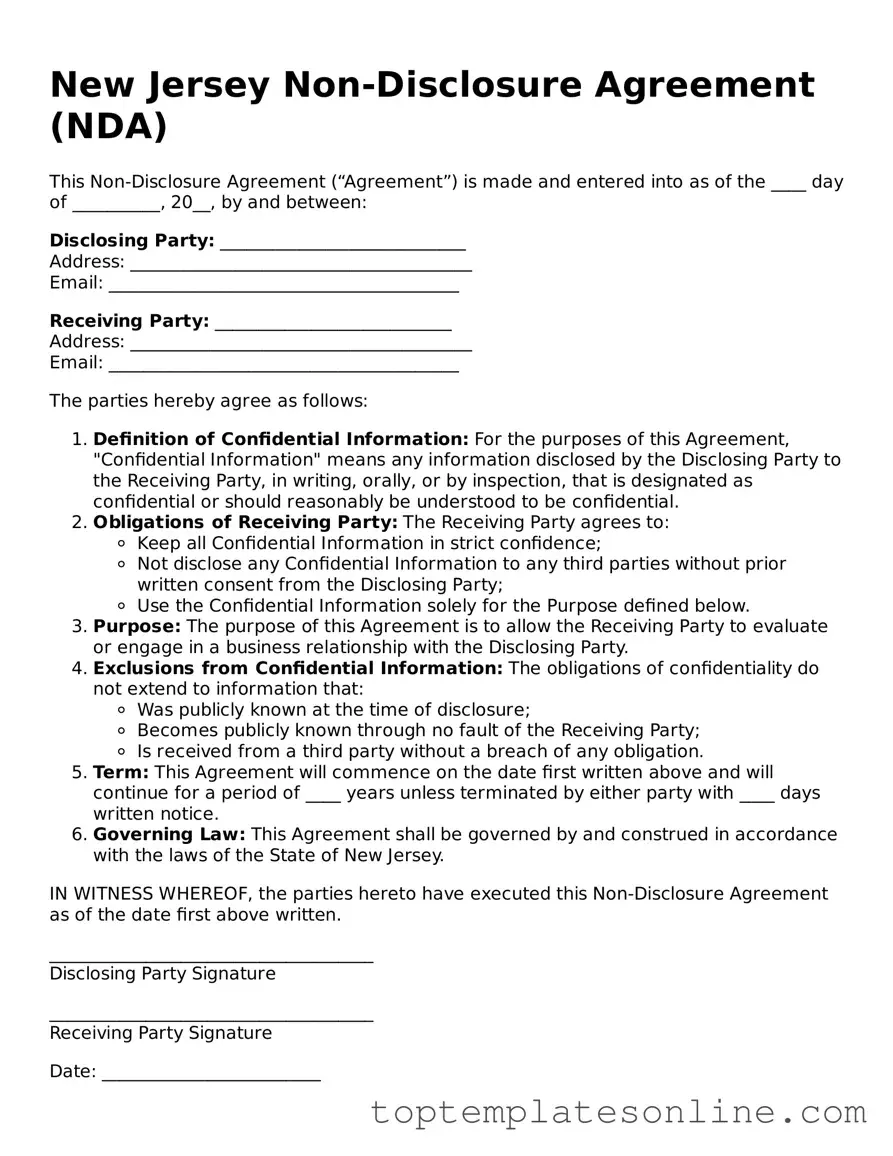Blank Non-disclosure Agreement Template for New Jersey State
A Non-disclosure Agreement (NDA) form in New Jersey is a legal document that protects confidential information shared between parties. This agreement ensures that sensitive data remains private and is not disclosed to unauthorized individuals. By signing an NDA, parties can foster trust and collaboration while safeguarding their proprietary information.
Customize Non-disclosure Agreement Here
